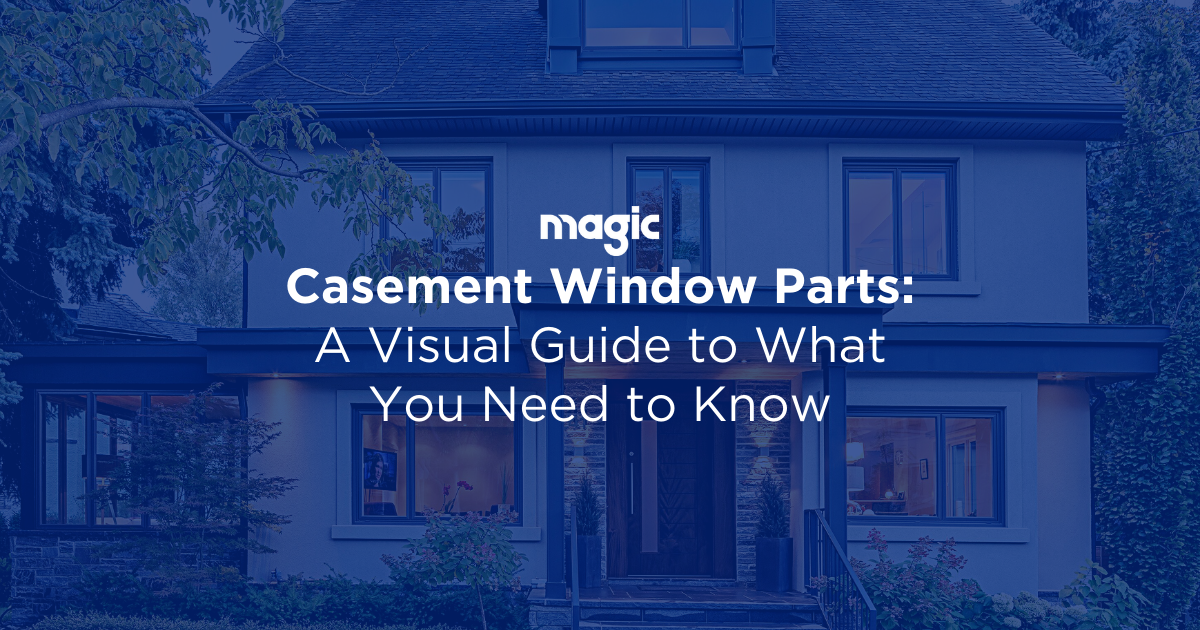Get to know the most common window design on the market.
If you take a look around the room you’re in right now, chances are you’ll stare through a casement window. And while you’re probably more preoccupied with the view rather than the window itself, the popularity of this design cannot be overstated.
Understanding how these window units work can be beneficial — especially when it comes time to replace or install new casement windows. So to help you get a better grasp of casement window parts, functionality, flaws, and how they can be improved, we’ve put together this guide.
Navigate this content:
Part 1: What is a Casement Window?
- Understanding Casement Window Parts
- The Problem With Cranks on Casement Windows
- Parallex Hardware: Eliminating the Crank for Better, Longer-Lasting Window Performance
Part 2: Casement Window Glass and Insulation
Part 3: Casement Window Frames
- The Problem With Hollow Vinyl PVC Frames
- Hybrid Fusion Frames: Aluminum, Steel and Highly-Efficient Vinyl U-PVC
Part 4: Discover a Better Iteration of the Casement Window
Part 1: What is a casement window?
Casement windows are designed to swing outward like a door. They attach to the window frame by one or more hinges on the side. These windows are ideal for airflow and ventilation and for providing an alternative means of escape. Traditional casements open and shut by means of a roto-gear and a crank located at the bottom of the frame. When closed, locking mechanisms on the frame pull the sash up against the frame and lock it into position.
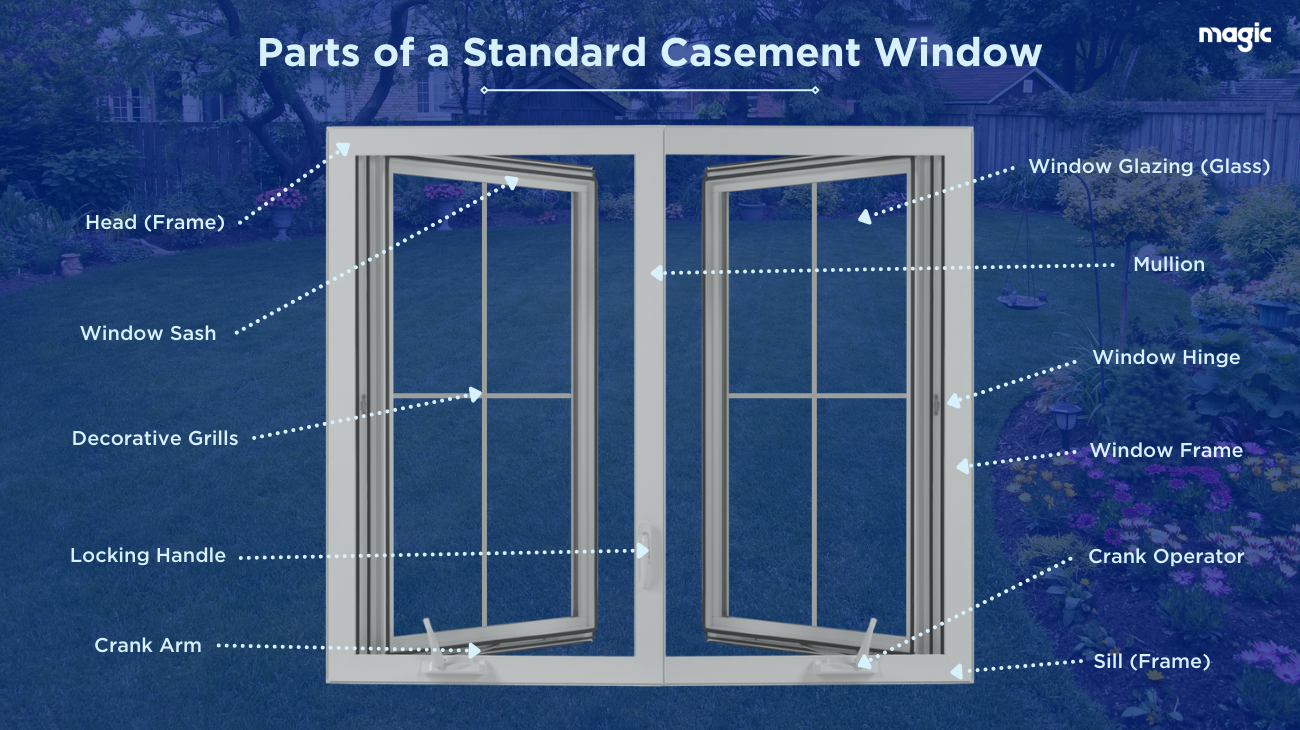
Understanding Casement window parts:
Firstly, the Frame: The frame is the structure that both surrounds and supports the entire window unit. A frame’s components can vary depending on the type of window being installed.
The Glazing: This term refers to the cut piece of glass that fills the window frame. If a window has one pane of glass, it is a single-glazed window; if it has two panes, it is double-glazed; three panes, triple-glazed. Most domestic windows on the market are either double-glazed or triple-glazed.
The Sash: The moveable panel that holds the glass and the framework of the glass firmly locked in place. When you open a casement window, this is the part that actually swings outward.
The Casing: The decorative mold that goes around the window frame on the inside of the home.
The Sill: The horizontal section that forms the bottom of the window frame
The Jamb: A vertical section that connects the interior of the window frame to the interior drywall
The Head: The horizontal section that forms the top of the window frame
The Mullion: A vertical or horizontal element of the frame that forms a division between the different glass units of a window.
The Multi-Point Locks: The locking system that holds the window sash in place in multiple parts along the frame when it is closed.
The Hinges: The components of the casement window that secure the sash to the sides of the window frame (jamb), allowing the window to swing inward and outward.
The Locking Handles: On many standard casement designs, these handles sit in the middle of the sash and facilitate the opening of the window sash (or sashes).
Finally, the Window Crank: A staple of North American window design for years. Cranks are made up of a number of components, but the general idea is simple: The crank mechanism is mounted against the frame on the inside. The user turns the operator arm to open the window, thereby activating a roto-gear which swings the sash outward on the crank’s control arm.
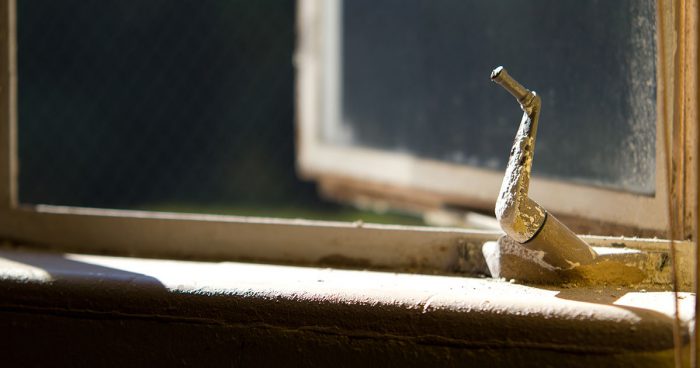
The Problem With Cranks on Casement Windows
Their ubiquity aside, window cranks are outdated and prone to gradual degradation over time.
- Because cranks only work by moving the sash from the bottom, the top of the sash only ever reacts to this movement. Over time, this uneven distribution of weight and motion can cause the sash to warp, sag and bow within the frame.
- Crank mechanisms will also strip, break, loosen and face seasonal-specific issues over time.
- Issues surrounding cranks and uneven weight distribution are even more glaring with triple-glazed windows. These windows contain three panes of glass and are far heavier than double-glazed alternatives. More weight means more continuous strain on the crank mechanism.
- All of these issues mean that cranks require routine maintenance to even function properly, let alone avoid lasting damage to the window unit.
Parallex Hardware: Eliminating the Crank for Better, Longer-Lasting Window Performance
No more clunky cranks, gears, or control arms — with Parallex® Hardware, these outdated casement window parts are replaced with an elegant system. Here is how it works:
- A large galvanized steel rod runs through the internal part of the sash, connecting to parallel tracks that run along the top and bottom of the window frame
- It forces the top and bottom of the sash to move in complete tandem along parallel tracks. This evenly distributes torque, weight, and movement, eliminating the risk of warping, sagging, or distortion.
- There is a complete lack of unnecessary mechanical parts. No cranks, no hinges anywhere.
- This technology improves energy efficiency through tighter seals and creates a wider opening for better views, improved ventilation, and a highly accessible escape route.
Part 2: Casement Window Glass and Insulation
Now that we have an understanding of the various casement window parts, let’s zoom in a little further to understand the window’s glass.
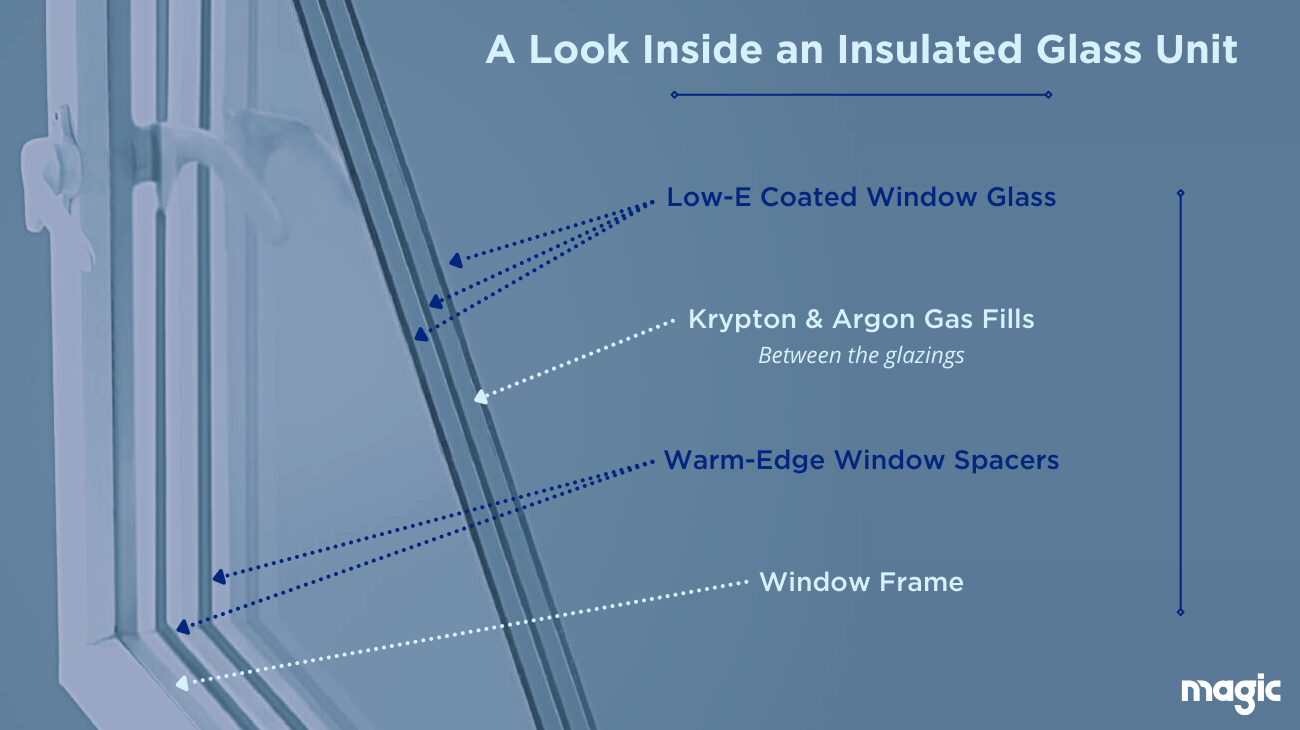
What Makes Up an Insulated Glass Unit?
Low Emissivity (Low-E) Coated Window Glass: This transparent, incredibly thin coating helps the window reflect unwanted solar heat, allowing homes to cool more efficiently in warmer temperatures. It also reflects the radiant heat emitted by objects inside the home (such as an HVAC unit) back into the home. This helps reduce heat loss during the colder months.
Krypton & Argon Gas Fills: Gas fills are an essential step in creating an insulated glass unit. Manufacturers fill the space between the glass units with gases like krypton or argon. Why not just air? These heavier noble gases can better impede the transfer of heat through a window.
Warm-Edge Spacers: These seals insulate the edges of the glass unit and keep the glass panes firmly apart from each other. Warm-edge spacers are essential to a window’s ability to remain energy efficient over the long term.
Learn More About Energy-Efficiency & Windows Here >>
Part 3: Casement Window Frames
Wood, fiberglass, composite materials, aluminum, and vinyl PVC — there are plenty of window frame materials out there. However, when it comes to casement windows, vinyl PVC is by far the most popular frame material on the market. Why?
- It’s a cheap, synthetic material with a very low thermal conductivity that makes it very energy efficient.
- These frames are a combination of different plasticizers, pigments and chemicals with hollow chambers that allegedly make for a lighter, more flexible product.
- It’s a frame material that allows manufacturers to weld the corners to create a perfect seal.
The Problem With Hollow Vinyl PVC Frames
The problem is that vinyl is not a particularly strong or durable material when used on its own.

While they are certainly a cheaper option, they are ultimately a poor investment. Over the long run, these frames will expand, contract, and often become damaged, resulting in another window replacement venture.
The main reason why homeowners replace their casement windows is that the hollow vinyl frames have failed or lost their seal. So why replace one flawed window design with a newer version of the same thing?
Hybrid Fusion Frames: Aluminum, Steel and Highly-Efficient Vinyl U-PVC
We’ve established that vinyl frames are efficient, yet lack strength and durability. The solution, then, is to combine this material with a strong support system to create a window frame that ticks all the boxes. In combining aluminum and vinyl PVC — along with the added strength of galvanized steel — Hybrid Fusion Frames are both extremely strong and highly efficient. With more strength, these frames can have a slim, stylish profile that places visual emphasis on the window’s glass and the outdoors beyond.

Part 4: Discover a Better Iteration of the Casement Window
We’ve covered casement window parts, features, flaws, and key areas of innovation. Finally, we want to help you understand how we put it all together to create a more durable, stylish, high-performance casement window.

Other Key Casement Window Parts & Components
Retractable Insect Screens and Blinds: With retractable screens and blinds, you can have complete control over when, where, and to what extent your screens are in use.
Custom Glass Formulation: Install energy-efficient casement windows that fit your home. Because we formulate all of our own glass units in-house, we can help ensure that your windows and doors are matched to your specific preferences, climate, and home’s construction.
Style and Aesthetics: From custom grill patterns and colour schemes to shapes textures, we can help you install beautiful custom windows that improve the look of your home and that can help you achieve your vision.
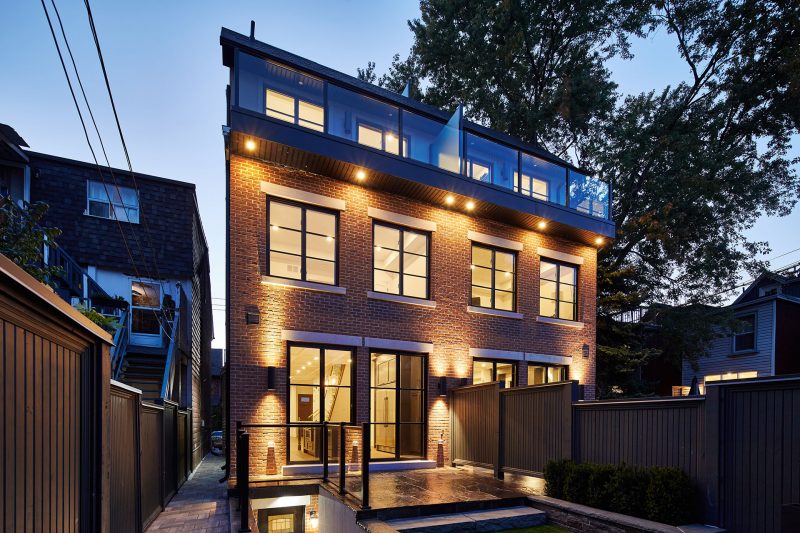
Have More Questions About Casement Window Parts, Performance, or Replacement?
Magic™ has installed innovative, high-performance windows and doors in the GTA and surrounding areas for over 40 years. Therefore, if you have more questions about the performance of your casement windows, book a free, no-hassle consultation with one of our representatives today!
Learn More About Window Replacement On Our Blog:
- Energy-Efficient Windows: Here is What to Look For
- The Parts of a Window: A Guide to Window Design
- The Benefits of Retractable Window Screens and Blinds
- 6 Ways to Tell if You Need to Repair or Replace Windows
- Why Crank Operated Casement Windows are Mechanically Flawed
- 4 Stunning Panoramic Window Walls
- The Main Issue With Hollow Vinyl Replacement Windows
- 3 Factors That Lead to Secure, Durable and Efficient Replacement Windows
- The Window Energy Rating Costs You Money: So Why Do Companies Promote It?
- Is There a Best Window For Cold Weather Climates?

